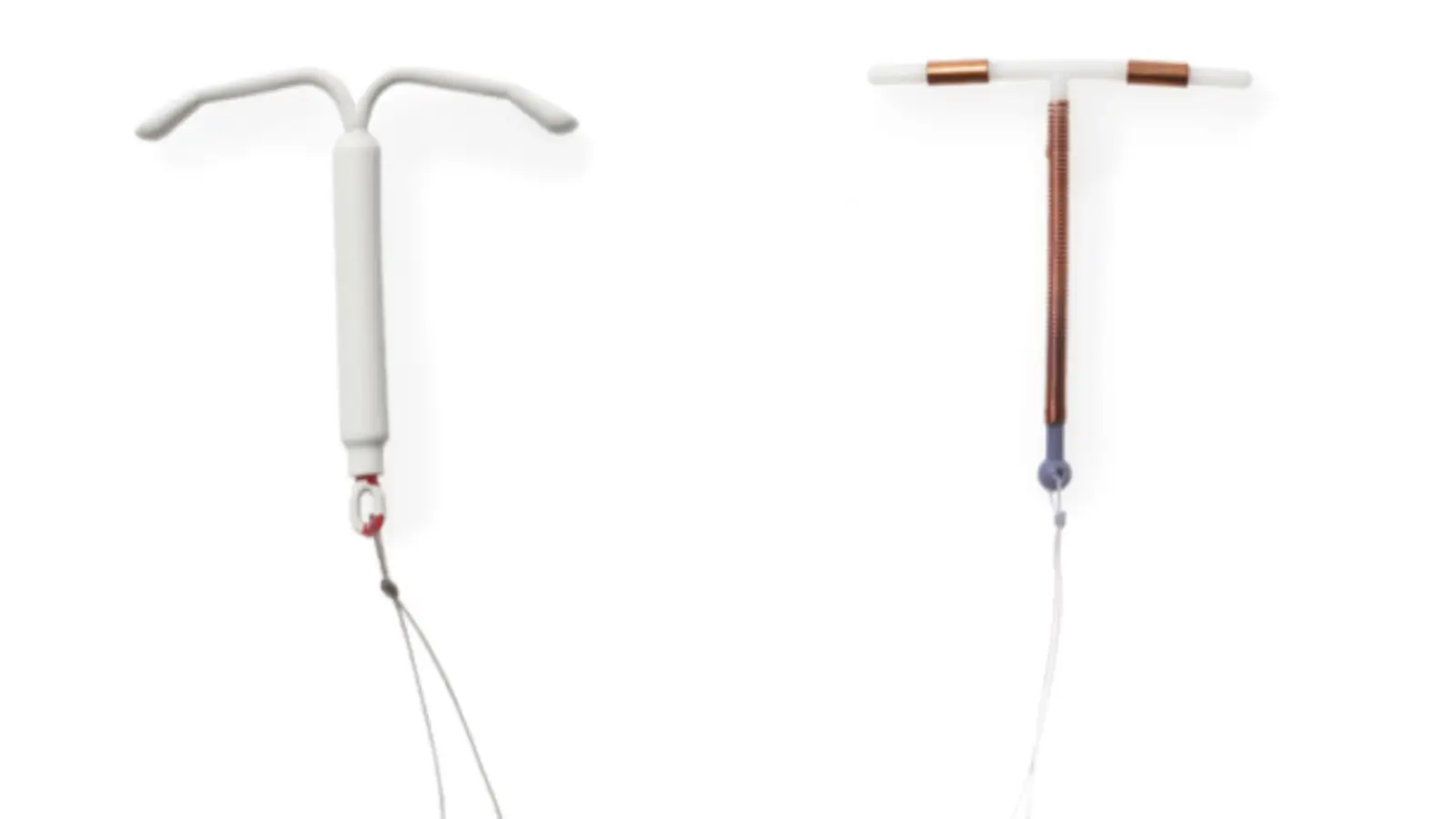Only for Licensed Professionals
Only for Licensed Professionals

How Does Jaydess Work?
David Fuller
Last Updated On: June 16, 2025
A study examining women after six years of using a levonorgestrel-releasing IUD revealed that 78.5% still experienced ovulatory cycles, with only 14.3% showing signs of anovulation. Despite its high contraceptive efficacy, the hormonal IUD mainly works by targeting the endometrium locally, rather than suppressing ovulation. This ability to provide reliable birth control while allowing the body’s natural cycles to continue makes hormonal IUDs particularly appealing for many women.
Among these, Jaydess, a smaller and lower-hormone alternative to traditional IUDs, stands out as part of a newer generation of reproductive health solutions. By offering effective contraception with minimal hormonal disruption, Jaydess caters to those seeking a balance between birth control and preserved hormonal function.
In this article, we’ll dive into how Jaydess works, from its hormone release mechanism to its effects on fertility, menstrual cycles, and overall contraceptive reliability.
Key Takeaways
- Jaydess releases levonorgestrel directly into the uterine cavity, which thickens cervical mucus, suppresses the endometrial lining, and alters uterine and tubal fluids to prevent fertilization.
- It starts with a release rate of approximately 14 micrograms of levonorgestrel per day, decreasing to about six micrograms per day over three years.
- Users often experience lighter periods or even amenorrhea, in contrast to copper IUDs, which may cause heavier periods and increased cramping initially.
- Jaydess is effective for up to 3 years, while copper IUDs can last between 5 and 10 years.
- The localized delivery results in minimal absorption into the bloodstream, reducing potential side effects such as mood swings and hormonal acne compared to traditional hormonal contraceptives.
- Jaydess contains a total of 13.5 mg of levonorgestrel, with significantly lower daily doses than other hormonal IUDs like Mirena.
- Normal fertility typically returns quickly after removal of Jaydess, with about 80% of women conceiving within 12 months post-removal.
- Jaydess is a suitable option for those seeking hormonal birth control with fewer systemic side effects and effective pregnancy prevention.
About: Operating since 2016, Med Supply Solutions is known for being one of the industry’s top and trusted suppliers of cosmetic and viscosupplementation products. If you’re looking to buy Jaydess online, contact our sales department for more information.

Local Hormone Release and Uterine Action

Jaydess releases levonorgestrel directly into the uterine cavity at an initial rate of approximately 14 micrograms per day. Over time, this release rate gradually decreases, reaching an average of about 6 micrograms per day by the end of the three years. The localized release of levonorgestrel in the uterus triggers several key contraceptive mechanisms that work together to prevent pregnancy:
- Thickening of Cervical Mucus: Jaydess causes the cervical mucus to become thicker and more viscous, making it difficult for sperm to enter the uterus and reach the egg. This is one of the primary barriers to fertilization.
- Endometrial Suppression: The hormone thins the endometrial lining, or the inner layer of the uterus. A thinner endometrium reduces the chances of implantation, even if fertilization were to occur. Over time, many users experience lighter periods or even amenorrhea due to this effect.
- Alteration of Uterine and Tubal Fluids: Jaydess also alters the composition and viscosity of fluids in the uterus and fallopian tubes, impairing sperm motility and function, which further reduces the likelihood of fertilization.
Unlike oral contraceptives or injections that circulate hormones throughout the body, Jaydess works primarily within the uterus. This targeted approach results in minimal systemic hormone levels in the bloodstream, which significantly reduces the risk of widespread side effects, such as mood swings or hormonal acne. The local delivery of the hormone means users benefit from high contraceptive efficacy with a lower total hormone dose.
How Does Jaydess Work Compared to Copper IUDs?

Both Jaydess and copper IUDs are highly effective contraceptive methods, but they work in different ways and may affect menstruation differently. Choosing the right option depends on your health needs, hormone sensitivity, and long-term reproductive plans.
| Feature | Jaydess (Hormonal IUD) | Copper IUD (Non-Hormonal IUD) |
| Mechanism | Releases levonorgestrel to thicken cervical mucus and suppress the endometrium | Releases copper ions to create a toxic environment for sperm |
| Menstrual Effects | Often results in lighter periods or amenorrhea | May cause heavier periods and increased cramping initially |
| Duration of Efficacy | Up to 3 years | 5 to 10 years, depending on the type |
Whatever you choose between Jaydess and a copper IUD should be based on your comfort with hormonal contraceptives, your menstrual patterns, and how long you wish to prevent pregnancy. For a deeper comparison between hormonal IUD options, exploring Jaydess vs Mirena, including their hormone levels, duration, and side effects, can further guide your decision.
How Does Jaydess Minimize Systemic Hormonal Exposure
Jaydess is specially designed to offer targeted contraception while minimizing the hormonal side effects often experienced with other birth control methods. Its localized delivery system and lower hormone dose make it a compelling choice for many users.
- Localized Hormone Release: Jaydess releases levonorgestrel directly into the uterus, where it is most effective. This high local concentration ensures that the contraceptive effect is targeted to the reproductive system, rather than affecting the entire body.
- Minimal Systemic Absorption: Because the hormone remains concentrated in the uterus, only a small amount enters the bloodstream. This reduces the likelihood of systemic side effects such as nausea, mood swings, and breast tenderness, which are more common with oral contraceptives.
- Lower Hormone Dose Compared to Other IUDs: Jaydess contains a total of 13.5 mg of levonorgestrel, releasing about 14 micrograms per day initially. This is significantly lower than Mirena, which starts at 20 micrograms per day. The lower dose further limits hormone circulation throughout the body, reducing the risk of widespread hormonal disruption.
- Reduced Incidence of Hormone-Related Side Effects: Thanks to its localized delivery and lower hormone content, users of Jaydess may experience fewer hormone-driven side effects, such as weight gain, persistent acne, or mood fluctuations, especially when compared to higher-dose options.
Jaydess is ideal for individuals who want hormonal birth control with a lower risk of systemic side effects. By concentrating its contraceptive action within the uterus, Jaydess offers effective pregnancy prevention without the broader hormonal impact of many other methods.
Jaydess Clinical Trial Efficacy and Return to Fertility
Jaydess is a low-dose levonorgestrel-releasing intrauterine system (LNG-IUS 13.5 mg), offering a highly effective and long-acting contraception solution for up to three years. With a Pearl Index of less than 1, Jaydess provides excellent reliability, placing it on par with higher-dose alternatives like Mirena (LNG-IUS 52 mg). However, unlike Mirena, Jaydess delivers lower systemic levels of levonorgestrel, which typically does not suppress ovulation, offering a more subtle hormonal impact.
The development of Jaydess addressed concerns regarding the higher systemic hormone levels delivered by Mirena, which some users found excessive. Alongside Kyleena (LNG-IUS 19.5 mg), Jaydess offers a more comfortable and less painful insertion experience, particularly for nulliparous women (those who have not given birth). These newer devices expand contraceptive options for patients seeking lower hormone doses, especially those who prioritize maintaining menstrual regularity.
From an economic standpoint, while Jaydess demonstrates strong efficacy, Mirena (LNG-IUS 52 mg) is the most cost-effective long-acting reversible contraceptive (LARC) in studies, particularly those conducted from the perspective of the Spanish national healthcare system. This is largely due to Mirena’s lower acquisition costs and the reduced healthcare resource use associated with it. However, for individuals who prioritize tolerability, ease of insertion, and predictable bleeding patterns, Jaydess remains a valuable and patient-friendly option.
Conclusion
Jaydess is a reliable, low-maintenance contraceptive option. It has the added benefits of lighter menstrual bleeding and rapid return to fertility upon removal. Its localized hormone release minimizes systemic side effects, making it suitable for women seeking a hormonal IUD with fewer systemic effects.
As with any contraceptive method, patients must consult a healthcare provider to determine the best fit for individual health needs and lifestyle.
FAQs
1. How is Jaydess inserted and removed?
Jaydess is inserted into the uterus by a trained healthcare provider during an office visit. A provider can also perform removal at any time.
2. Can Jaydess be used by women who haven’t had children?
Yes, Jaydess’s smaller size makes it suitable for women who haven’t given birth, offering easier insertion and comfort.
3. What are the common side effects of Jaydess?
Some users may experience irregular bleeding, headaches, or breast tenderness initially. These side effects often diminish over time.
4. How does Jaydess compare to Mirena?
While both are hormonal IUDs, Jaydess releases a lower dose of levonorgestrel and is effective for up to 3 years. In contrast, Mirena is effective for up to 5 years and may be more suitable for treating heavy menstrual bleeding.
References
Xiao B, Zeng T, Wu S, Sun H, Xiao N. Effect of levonorgestrel-releasing intrauterine device on hormonal profile and menstrual pattern after long-term use. Contraception. 1995;51(6):359-365. doi:10.1016/0010-7824(95)00102-g
Ogle K, Handy AB. The Effects of Hormonal and Non-Hormonal Intrauterine Devices on Female Sexual Function: A Systematic Review. Int J Sex Health. 2023;35(1):67-81. Published 2023 Jan 11. doi:10.1080/19317611.2022.2155898
Products
Cart
Log In
Newsletter
Subscribe for exclusive offers and updates on new arrivals
Share feedback at:
Working Hours
MON - SUN 9AM to 6PM EST
The Most Popular Brands
Med Supply Solutions
Support
Secure checkout is guaranteed with full adherence to PCI DSS payment standards.
Products listed here are guaranteed authentic and manufacturer-sourced.
Pay easily with trusted providers


*Google and Apple Pay are currently only available via a direct link provided by your account manager.
Copyright 2025. Med Supply Solutions